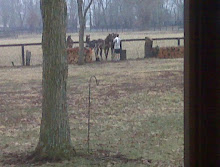The great cyclist trains with an eye on science, in that he completes a fitness test at regular intervals during training for the Tour de France. If Rachel had such tests, we would know in advance if she was ready to run or not.
Forget this past week, she very well have needed a race in her after powderpuff 6F breezes. The key is the Apple Blossom, wouldn't the owner/trainer like to know if she is ready?
”Armstrong's fitness testing facility was located a few miles north of Girona, on a hill near a golf course, where the road was exactly 1000 meters long, and rose 98 meters.
The most important number is watts at lactate threshold, as determined by power meter, heart rate monitor, and lactate testing strips. Threshold is how much power the rider can sustainably generate, without going into the red zone. Furthermore, this number is further crunched to watts per kilogram at threshold, taking into account the rider's current bodyweight.
6.7 watts/kg he enunciated, if you are near it, you can win. If you are not, you cannot.
---
Aiden O'Brien at Coolmore knows this, here is a quote from him regarding the great stayer Yeats:
"You ask most horses to go a mile and a half and that is the limit, but with this fellow his heart is only getting up to 180 beats at that stage."
John Magnier, the Coolmore Stud managing director, whose wife, Susan, owns the winner, described the satisfaction of winning the Irish St. Leger.
“Aidan has been training them differently this year, and this race has always been in mind for Yeats,” Magnier said.
---
That difference is heart rate/GPS/lactate monitoring -
For instance, we can determine, in a yearling, what the equivalent to Armstrong's 6.7 watts/kg is in order to predict likely future racing success.
I have already discovered, along with O'Brien, that a horse going a mile in 2:00 or better, keeping his heart rate below 200, is a stakes winner.
Subscribe to:
Post Comments (Atom)




Finally the science of training and fitness testing is moving from the university laboratories to the "real world". that is great to see. it is in the interests of the trainers, owners, and most importantly, in the interests of the welfare of the horses.
ReplyDeleteCheers
David Evans BVSc PhD
http://www.equinehealthfitness.com.au
equinehealthfitness@gmail.com
That you better hire a defense attorney when your real illegal methods come out..... oh oh. There's only so much that is "science."
ReplyDelete